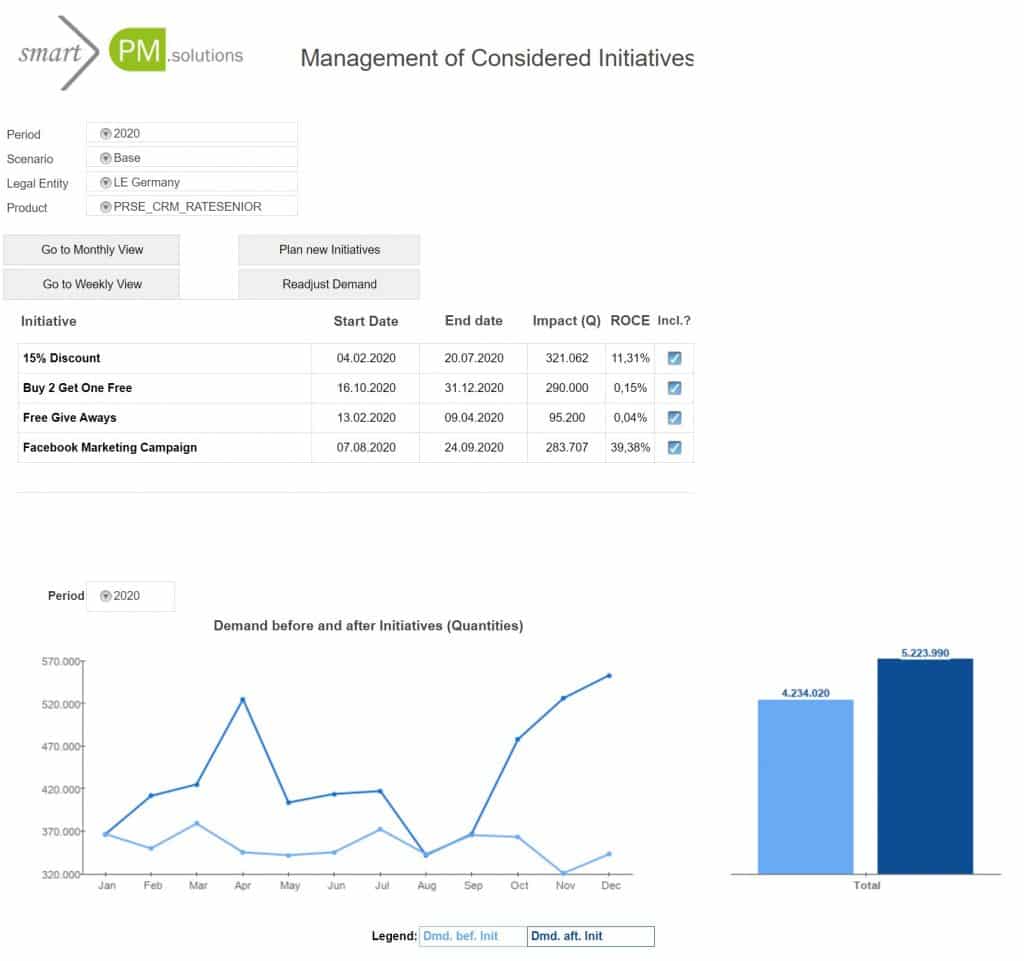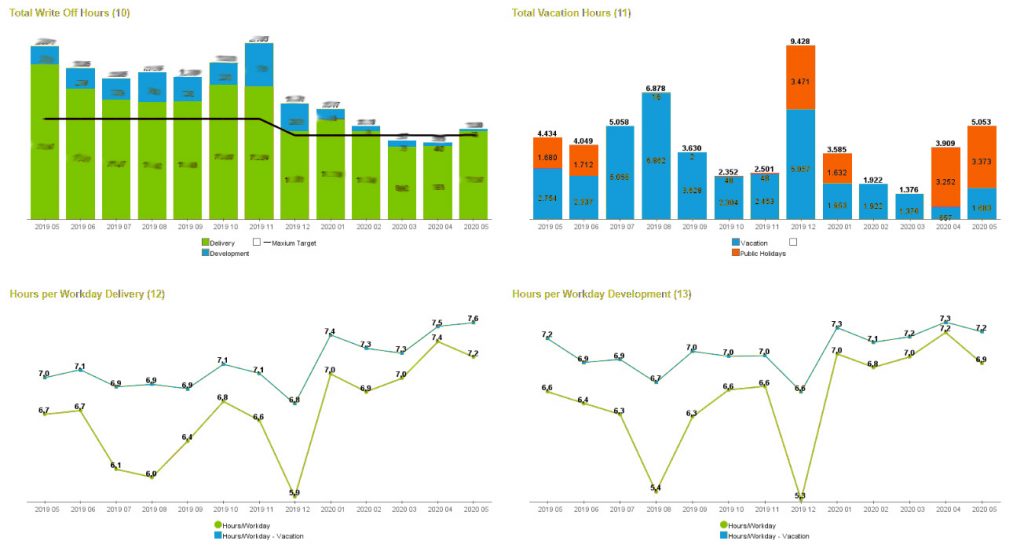Is xP&A just another buzzword in controlling or a future-oriented concept?
The term xP&A, coined by Gartner, stands for extended Planning and Analysis – i.e. extended, cross-departmental planning that includes not only the finance area but also all other relevant company areas and their contribution to the company’s success. In addition to financial data, S&OP, Marketing, Sales, HR, IT, the digitization department, etc. are considered. The aim is to provide up-to-date, data-based information for decisions – and to be able to answer spontaneous management questions holistically. With the help of a professional controlling tool, analyzes, planning, budgeting, forecasting, consolidation, standardized reporting, communication and collaboration are covered across departments. This saves time and nerves in the otherwise laborious process of merging, preparing and transferring data. In addition, a 100% reliable single point of truth is used. With the help of scenario and value driver planning, the impact of important influencing factors on the balance sheet, cash flow and income statement can be determined and responded to in good time or counter measured through initiatives.
More about the xP&A approach in the whitepaper: Fully integrated corporate planning in 4 steps >>
An example for xP&A – how can you imagine that in practice?
As an example, consider a company that manufactures vaccines. Suppose this pharmaceutical company makes a vaccine against COVID-19. In the first step, the provider must ensure that there is sufficient capacity for the production of vaccines that are in high demand. In order to be able to produce the required quantity, the corresponding availability of skilled workers and resources is required. Such resources regularly form a bottleneck, as they are often in demand in several projects at the same time (or in the case of external resources, by the competition). Other influencing factors on production and marketing – such as legal requirements – must also be taken into account. In order to remain competitive in the market, it is necessary to plan new developments and set priorities. What are the value drivers at this company and how can a precise forecast of future demand be made? Many questions from management at once which should be answered by controlling on the basis of data that is as reliable as possible in order to secure the company’s long-term success.
This is exactly where the xP&A system comes into play:
While FP&A – “Financial Planning & Analysis” – only controls the finance area, the fully integrated corporate planning focuses on the holistic control of all company areas. In the xP&A system, the production capacities can be planned taking into account the skilled workers and stock levels. The S&OP and HR areas are affected as well as marketing and sales. The production plan is derived or optimized proposals are generated on the basis of sales planning (on an annual, monthly, weekly or daily basis). Machine learning algorithms that, as self-learning systems, succeed best in approximating the true value (backtesting) have proven to be astonishingly accurate.
When considering the project portfolio, prioritized projects are given preference and provided with resources (project/program performance management). Project budget limits are set on the basis of the corporate strategy in order not to avoid a “rude awakening” in the post-calculation due to the budget being massively exceeded.
Controlling provides the management with comprehensive information in standardized reports, nicely presented in dashboards and graphics in the corporate design – with 100% reliable and up-to-date data from all departments. Based on simulations, the CEO decides on initiatives to be implemented in all areas of the company – the search for specialist personnel in HR, the budget increase for prioritized projects such as the construction of a new production facility due to the higher demand that cannot be met by upstream production. By simulating the impact of the initiatives on the P&L, balance sheet and cash flow, action can be taken proactively. Here technology by far beats gut decisions (even those made with a lot of experience).


Figures 1-5: Dashboards of the smartPM xP&A-Integrated Business Planning Solution: Optimization of Production Plan, Tracking of Initiatives, Capacity Planning, Top-Down/Bottom-Up Planning based on market leading software-technology of Jedox, Unit4 FP&A/Prevero and Microsoft



Whatever you call it – xP&A is the future in controlling
That’s impressive, but is xP&A really something new now? No, not really, just repackaged. There are many terms for xP&A: We call it fully integrated corporate planning, others call it connected planning or networked corporate planning. In short: fragmented data structures must be avoided in the interests of corporate success. The data collected from numerous sources are taken over centrally by standard connectors and linked to form an overall information system. The advantage? Constantly updated, complete and, above all, correct data for everyone involved. Decision-makers benefit from the all-round view and in-depth analyzes. More about the xP&A approach in the whitepaper: Fully integrated corporate planning in 4 steps >>
Efficient corporate planning or xP&A requires digitization. Many case studies demonstrate the often arduous journey to fully integrated business planning, but the reward is regularly greater. Reliable decisions, massive time and cost savings, proactive corporate management and happier employees who can finally use their skills properly again.





